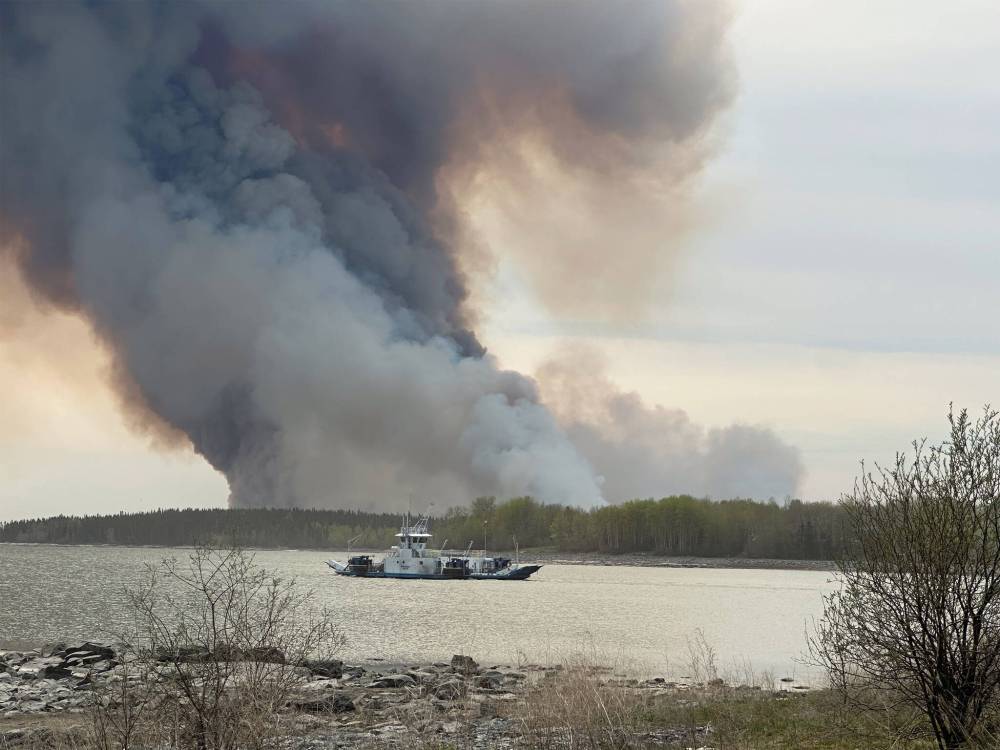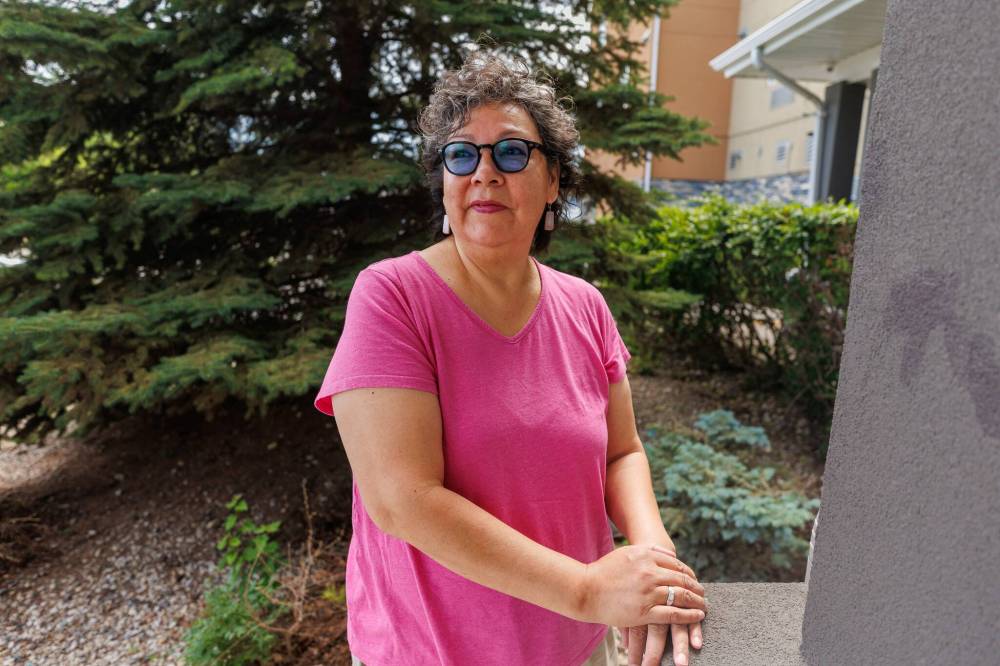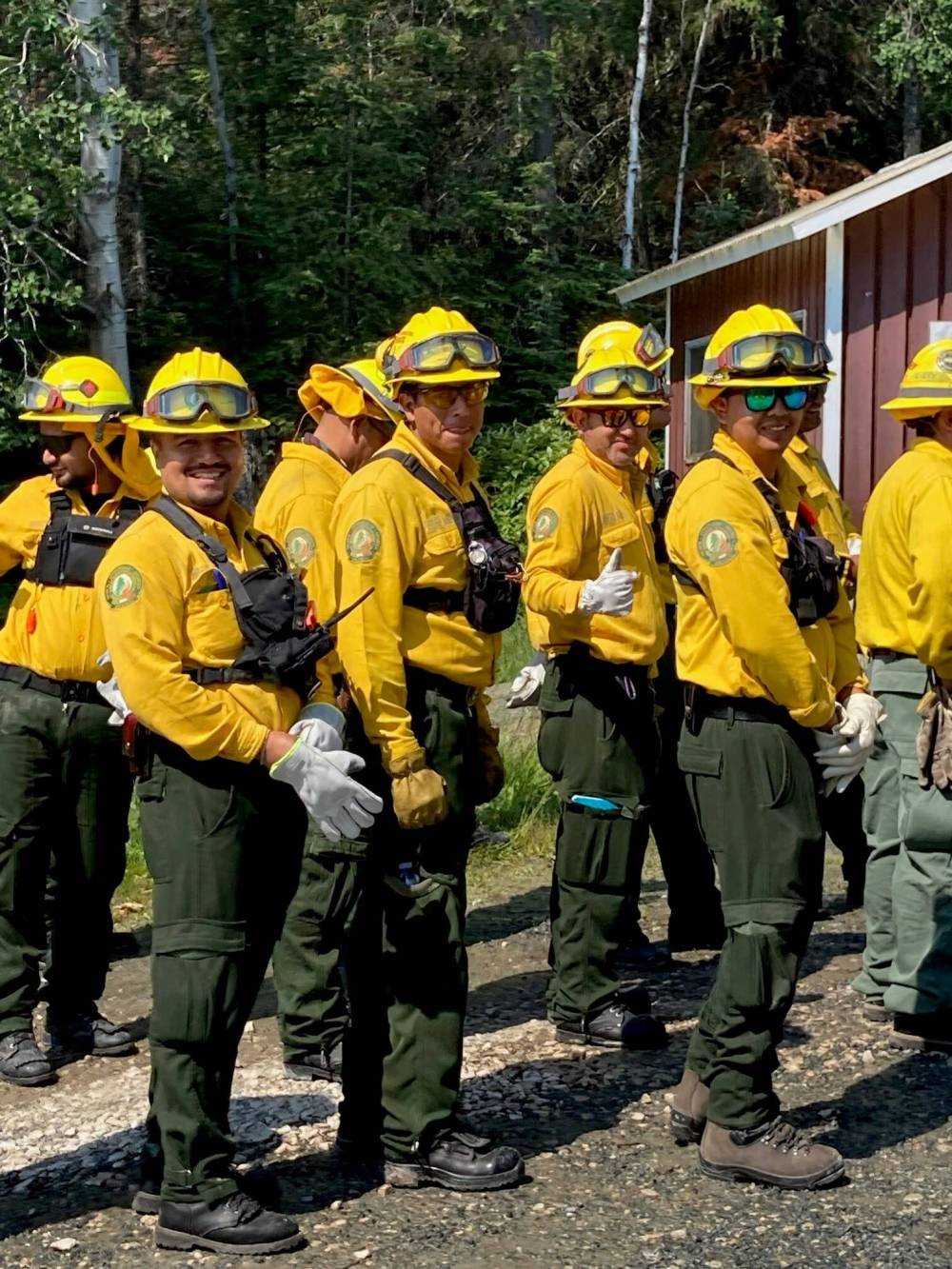From boreal forest to Niagara Falls to concrete jungle
Northerner reflects on evacuation as waiting game continues
Advertisement
Read this article for free:
or
Already have an account? Log in here »
To continue reading, please subscribe:
Monthly Digital Subscription
$0 for the first 4 weeks*
- Enjoy unlimited reading on winnipegfreepress.com
- Read the E-Edition, our digital replica newspaper
- Access News Break, our award-winning app
- Play interactive puzzles
*No charge for 4 weeks then price increases to the regular rate of $19.00 plus GST every four weeks. Offer available to new and qualified returning subscribers only. Cancel any time.
Monthly Digital Subscription
$4.75/week*
- Enjoy unlimited reading on winnipegfreepress.com
- Read the E-Edition, our digital replica newspaper
- Access News Break, our award-winning app
- Play interactive puzzles
*Billed as $19 plus GST every four weeks. Cancel any time.
To continue reading, please subscribe:
Add Free Press access to your Brandon Sun subscription for only an additional
$1 for the first 4 weeks*
*Your next subscription payment will increase by $1.00 and you will be charged $16.99 plus GST for four weeks. After four weeks, your payment will increase to $23.99 plus GST every four weeks.
Read unlimited articles for free today:
or
Already have an account? Log in here »
Wildfire evacuee Alberteen Spence closes her eyes and imagines she’s in her backyard on the shore of Split Lake in northern Manitoba, where the air is fresh, and she finds peace and quiet.
“Smelling that boreal forest air, being in that oxygen tank,” the resident of Tataskweyak Cree Nation said Thursday. “I imagine myself there now, lying on the moss next to the lake, and breathing that air. That is my home environment. That’s what I grew up in.”
For now, Spence, 58, is staying in a Winnipeg hotel, next to a busy, noisy truck route in a concrete jungle, after spending more than three weeks in a hotel in Niagara Falls, Ont.

SUPPLIED
Alberteen Spence, who’s been displaced from her home in Tataskweyak Cree Nation since June 1, was one of more than 2,000 wildfire evacuees from Manitoba who were moved to hotels in Niagara Falls, Ont.
More than 2,300 evacuees from several communities were moved to the southern Ontario city amid the lack of available hotel rooms in Manitoba.
They’ve gradually been returning as communities lift mandatory evacuation orders, or rooms become available in Winnipeg.
A provincial spokesperson said 1,425 evacuees remained in Niagara Falls as of Thursday, while 933 hotel rooms in Manitoba were occupied by evacuees.
Tataskweyak’s mandatory evacuation order remains in place. It was initially issued May 30 due to a blaze that started near the First Nation one day earlier.
Residents were unable to return home after the fire threat receded in mid-June because the community’s water treatment plant had malfunctioned. Tests indicated high levels of aluminum in the water.
It is not yet known when evacuees will be allowed to return to Tataskweyak, which is home to about 2,400 people and is located about 770 kilometres north of Winnipeg.
In a social media post Tuesday, Tataskweyak’s council said a new water sample is expected to be submitted for testing Friday, after cleaning and flushing of the water treatment system.

SUPPLIED
A wildfire near Tataskweyak Cree Nation (Split Lake) forced the evacuation of the northern Manitoba town in late May.
They said Tataskweyak will be given the go-ahead to lift the order when a test result is “deemed safe.” The 22,276-hectare fire, meanwhile, was being held as of Thursday, the province said.
A new water treatment plant in Tataskweyak, when completed, will source water from Assean Lake instead of Split Lake. The latter has been the subject of complaints about poor water quality for years. A long-term boil water advisory is in place for more than 350 homes.
After being displaced for more than a month, Spence and other homesick evacuees are hoping for good news soon.
“I don’t know what we’re going home to. We’re going to be OK. We always are,” she said. “I’m just looking forward to going home and sleeping in my own bed.”
After leaving Tataskweyak on June 1, she drove to Gillam, where evacuees boarded flights to Winnipeg with the few belongings they had with them. Spence said she had enough clothes for only five days.
She was on a full plane that landed in Hamilton June 3. She stayed in Niagara Falls, a tourist hot spot, until a group of evacuees returned to Manitoba by plane June 26.
On her first morning in Niagara Falls, Spence sat under an oak tree, looked out at the waterfalls and prayed for communities affected by wildfires.

MIKE DEAL / FREE PRESS
Alberteen Spence of Tataskweyak Cree Nation is among the evacuees who’ve been brought back from Niagara Falls.
While some evacuees slept in congregate shelters in Manitoba, she was grateful to have a room with an air conditioner and a comfortable bed. She spent a lot of time going for walks and seeing the sights.
While she missed her daily routine and comforts of home, Spence said she had enriching experiences in southern Ontario and just across the border in upstate New York.
She participated in a traditional sweat that was held by a Hamilton organization; attended a North American Indian Women’s Association conference in Niagara Falls, N.Y.; and learned more about the Iroquois Confederacy and its six member nations in that region.
“That was really beautiful,” Spence said of the sweat. “I still am (in awe). I still haven’t processed some of that experience.”
Some evacuees are not coping well while displaced from remote communities, said Spence, noting the stress of an evacuation, and the easy access to alcohol and drugs in urban centres. Tataskweyak has taken steps in recent years to ban and confiscate intoxicants, and banish drug dealers.
The Manitoba Wildfire Service’s online map displayed 58 active wildfires Thursday afternoon. Of those, 18 were out of control, including a 370,781-hectare fire (detected May 21) near Flin Flon and Sherridon in the north, and a 251,684-hectare blaze (detected May 12) in and around Nopiming Provincial Park in eastern Manitoba.
Lighting strikes sparked dozens of new, mostly small fires in the last week. Most are some distance from populated areas.

PROVINCE OF MANITOBA
Mexico sent 100 firefighters to Manitoba this week to backfill out-of-province crews.
Mexico sent 100 firefighters to Manitoba this week to backfill out-of-province crews, mostly from the U.S., who recently departed. Firefighters from Mexico have been assigned to the blaze near Flin Flon, a provincial spokesperson said.
They said 36 firefighters from the U.S. and 31 from Parks Canada are also fighting blazes in Manitoba, alongside provincial and local crews.
chris.kitching@freepress.mb.ca

Chris Kitching is a general assignment reporter at the Free Press. He began his newspaper career in 2001, with stops in Winnipeg, Toronto and London, England, along the way. After returning to Winnipeg, he joined the Free Press in 2021, and now covers a little bit of everything for the newspaper. Read more about Chris.
Every piece of reporting Chris produces is reviewed by an editing team before it is posted online or published in print — part of the Free Press‘s tradition, since 1872, of producing reliable independent journalism. Read more about Free Press’s history and mandate, and learn how our newsroom operates.
Our newsroom depends on a growing audience of readers to power our journalism. If you are not a paid reader, please consider becoming a subscriber.
Our newsroom depends on its audience of readers to power our journalism. Thank you for your support.














